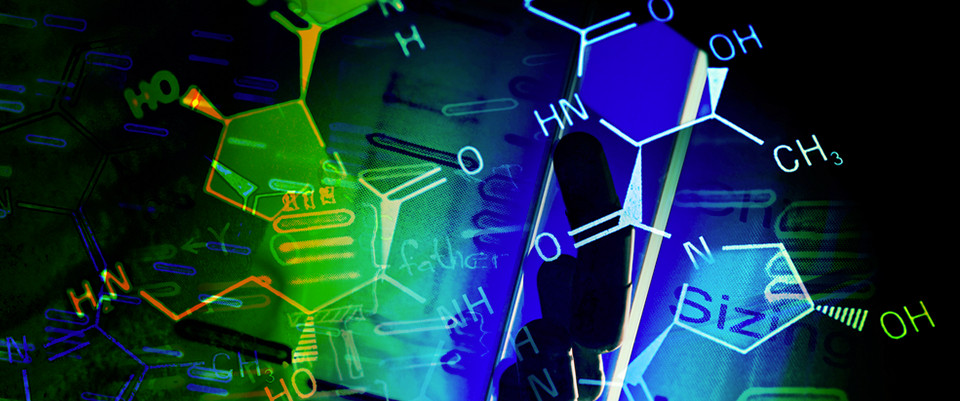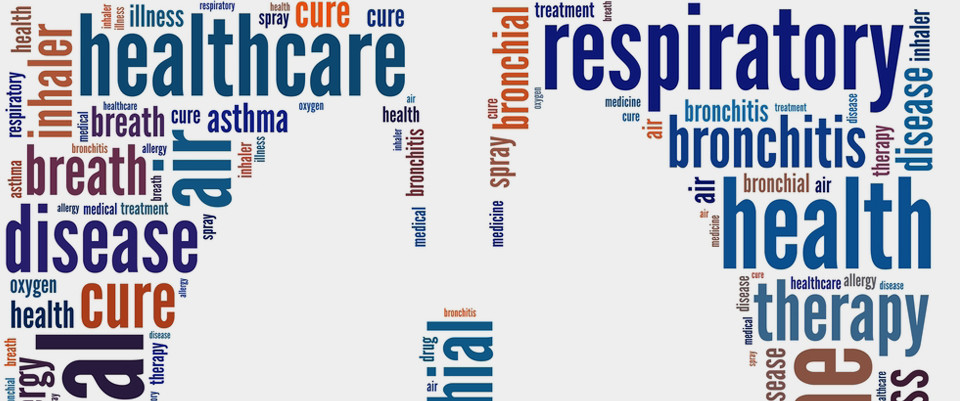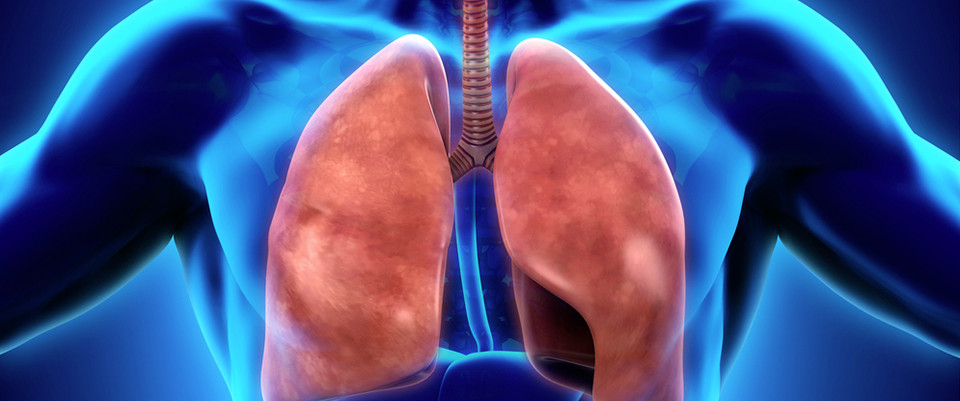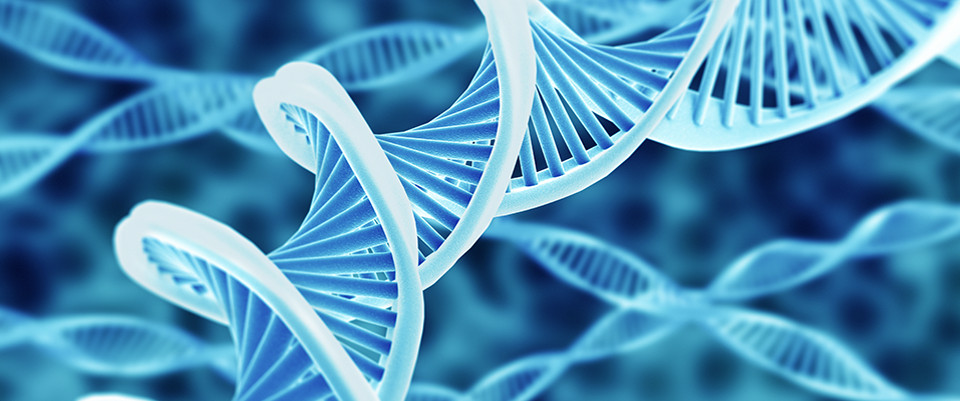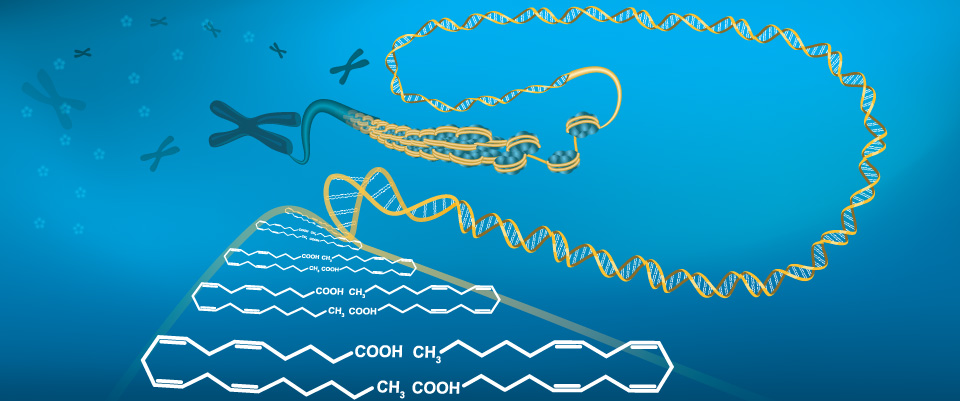PubMed
Chirality Quantification for High-Performance Nanophotonic Biosensors
Small Methods. 2025 Apr 8:e2500112. doi: 10.1002/smtd.202500112. Online ahead of print.ABSTRACTRecent advancements in chiral metabolomics have facilitated the discovery of disease biomarkers through the enantioselective measurement of metabolites, offering new opportunities for diagnosis, prognosis, and personalized medicine. Although chiral photonic nanomaterials have emerged as promising platforms for chiral biosensing, enhancing sensitivity and enabling the detection of biomolecules at extremely low concentrations, a deeper understanding of the relationship between structural and optical chirality is crucial for optimizing these platforms. This perspective examines recent methods for quantifying chirality, including the Hausdorff Chirality Measure (HCM), Continuous Chirality Measure (CCM), Osipov-Pickup-Dunmur (OPD), and Graph-Theoretical Chirality (GTC) measure. These approaches have advanced the understanding of chirality in both materials and biomolecules, as well as its correlation with optical responses. This work emphasizes the role of chiral quantification in improving biosensor performance and explores the potential of near-field chiroptical studies to enhance sensor capabilities. Finally, this work addresses key challenges and outline future research directions for advancing chiral biosensors, with a focus on improving nano-bio interface interactions to drive the development of next-generation sensing technologies.PMID:40200644 | DOI:10.1002/smtd.202500112
Identification of Diagnostic Biomarkers for Colorectal Polyps Based on Noninvasive Urinary Metabolite Screening and Construction of a Nomogram
Cancer Med. 2025 Apr;14(7):e70762. doi: 10.1002/cam4.70762.ABSTRACTPURPOSE/BACKGROUNDS: Colorectal polyps (CRPs) are precursors to colorectal cancer (CRC), and early detection is crucial for prevention. Traditional diagnostic methods are invasive, prompting a need for noninvasive biomarkers. This study aimed to identify urinary metabolite biomarkers for diagnosing CRPs and construct a diagnostic nomogram based on noninvasive urinary metabolite screening.PATIENTS AND METHODS: A total of 192 participants, including 64 CRP patients and 128 healthy controls, were recruited. Urine samples were analyzed using untargeted gas chromatography-mass spectrometry (GC-MS) and ultra-performance liquid chromatography-mass spectrometry (UPLC-MS). Metabolite screening was performed using weighted gene coexpression network analysis (WGCNA), least absolute shrinkage and selection operator (LASSO), and support vector machine-recursive feature elimination (SVM-RFE). A diagnostic nomogram was developed based on identified metabolites, and its performance was evaluated using receiver operating characteristic (ROC) curves, calibration plots, and decision curve analysis (DCA).RESULTS: A total of 350 metabolites were identified, with 7 key metabolites significantly associated with CRP. Multivariate logistic regression analysis identified Saccharin (OR = 48.3, 95% CI: 4.44-525.32) and N-omega-acetylhistamine (OR = 27.91, 95% CI: 2.31-337.06) as significant risk factors for CRP, while N-methyl-L-proline, trimethylsilyl ester (OR = 0.08, 95% CI: 0.01-0.8) was a protective factor. A nomogram incorporating these metabolites demonstrated strong discriminatory power, with AUC values of 0.974 and 0.960 in the training and validation sets, respectively. Calibration plots and DCA confirmed the model's accuracy and clinical utility.CONCLUSIONS: This study successfully identified seven urinary metabolites as potential noninvasive biomarkers for CRP. The constructed diagnostic nomogram, based on these metabolites, offers high predictive accuracy and clinical applicability, providing a promising tool for the early detection of CRP.PMID:40200572 | DOI:10.1002/cam4.70762
Mechanisms of Baicalin Alleviates Intestinal Inflammation: Role of M1 Macrophage Polarization and Lactobacillus amylovorus
Adv Sci (Weinh). 2025 Apr 8:e2415948. doi: 10.1002/advs.202415948. Online ahead of print.ABSTRACTBaicalin has been widely used for its anti-inflammatory pharmacological properties, yet its effects on bacterial intestinal inflammation and the mechanisms remain unclear. This study revealed that baicalin alleviates bacterial intestinal inflammation through regulating macrophage polarization and increasing Lactobacillus amylovorus abundance in colon. Specifically, transcriptomic analysis showed that baicalin restored Escherichia coli-induced genes expression changes including T helper cell 17 differentiation-related genes, macrophage polarization related genes, and TLR/IRF/STAT signaling pathway. Subsequent microbial and non-targeted metabolomic analysis revealed that these changes may be related to the enhancement of Lactobacillus amylovorus and the upregulation of its metabolites including chrysin, lactic acid, and indoles. Furthermore, whole-genome sequencing of Lactobacillus amylovorus provided insights into its functional potential and metabolic annotations. Lactobacillus amylovorus supplementation alleviates Escherichia coli-induced intestinal inflammation in mice and similarly inhibited M1 macrophage polarization through TLR4/IRF/STAT pathway. Additionally, baicalin, Lactobacillus amylovorus, or chrysin alone could regulate macrophage polarization, highlighting their independent anti-inflammatory potential. Notably, this study revealed that baicalin alleviates intestinal inflammation through TLR4/IRF/STAT pathway and increasing Lactobacillus amylovorus abundance and the synthesis of chrysin. These findings provide new insights into the therapeutic potential of baicalin and Lactobacillus amylovorus in preventing and treating intestinal inflammation, offering key targets for future interventions.PMID:40200426 | DOI:10.1002/advs.202415948
Multi-Omic Evaluation of PLK1 Inhibitor-Onvansertib-In Colorectal Cancer Spheroids
J Mass Spectrom. 2025 May;60(5):e5137. doi: 10.1002/jms.5137.ABSTRACTPolo-like kinase 1 (Plk1) is a serine/threonine kinase involved in regulating the cell cycle. It is activated by aurora kinase B along with the cofactors Borealin, INCE, and survivin. Plk1 is involved in the development of resistances to chemotherapeutics such as doxorubicin, Taxol, and gemcitabine. It has been shown that patients with higher levels of Plk1 have lower survival rates. Onvansertib is a competitive ATP inhibitor for Plk1 in clinical trials for the treatment of tumors and has recently entered a trial for the treatment of KRAS mutant colorectal cancers (CRCs). In this study, we conducted an untargeted liquid chromatography-mass spectrometry (LC-MS) proteomics study as well as an untargeted lipidomics analysis of HCT 116 spheroids treated with onvansertib over a 72-h treatment time-course experiment. Mass spectrometry imaging (MSI) showed that onvansertib begins to accumulate most prominently after 12 h of treatment and continues to accumulate through 72 h. Proteomic results displayed alterations to cell cycle control proteins and an increasing abundance of aurora kinase B and Borealin. The proteomics data also showed alterations to many lipid metabolism enzymes. The MSI lipidomics data indicated alterations to phosphatidylcholine lipids, with many lipids increasing in abundance over time or increasing until 12 h of onvansertib treatment and decreasing after that time point. In summary, these results suggest that onvansertib is causing cells within the spheroid to halt at a certain phase of the cell cycle in accordance with previous literature. Our findings suggest the S phase is likely interrupted, with observed alterations in cell cycle control proteins and PC lipid abundance.PMID:40197665 | PMC:PMC11976698 | DOI:10.1002/jms.5137
Comprehensive analysis of transcriptome and metabolome identified the key gene networks regulating fruit length in melon
BMC Plant Biol. 2025 Apr 8;25(1):442. doi: 10.1186/s12870-025-06332-0.ABSTRACTBACKGROUND: Melon is an ideal crop model for studying fruit development. Fruit shape is an important quality trait, and fruit length is a key indicator affecting fruit shape. However, studies on the genes regulating melon fruit length are still limited.RESULTS: In this study, we investigated the gene network regulating fruit morphology in melons utilizing transcriptome profile and a co-expression pattern-based approach. Four co-expression modules/gene networks highly correlated with changes in endogenous plant hormone levels at different developmental stages were identified. We pinpointed 11 key genes associated with cell development, 4 genes related to microtubule development, and 16 genes involved in the auxin (IAA, indole-3-acetic acid) pathway. These genes were identified as module hubs, and their expression level correlated with phenotypic variation. Through rigorous screening methods, we enhanced the likelihood that these genes are genuine candidates in the regulation of the fruit morphology network. These genes play a significant role in controlling fruit length, providing crucial insights into the molecular mechanisms underlying melon fruit development.CONCLUSIONS: Our findings revealed candidate genes that regulate melon fruit length, helping in the understanding of the molecular mechanisms underlying melon fruit development. These genes will be valuable for implementing marker-assisted breeding strategies.PMID:40200143 | DOI:10.1186/s12870-025-06332-0
A multi-omics analysis reveals candidate genes for Cd tolerance in Paspalum vaginatum
BMC Plant Biol. 2025 Apr 8;25(1):441. doi: 10.1186/s12870-025-06478-x.ABSTRACTCadmium (Cd) pollution in the farmland has become a serious global issue threatening both human health and plant biomass production. Seashore paspalum (Paspalum vaginatum Sw.), a halophytic turfgrass, has been recognized as a Cd-tolerant species. However, the underlying genetic basis of natural variations in Cd tolerance still remains unknown. This study is possibly the first to apply genome-wide association studies (GWAS) and selective sweep analysis to identify potential Cd stress-responsive genes in P. vaginatum. We identified a total of 89 candidate genes and 656 putative selective sweeps regions. Based on the correlation analysis of differentially expressed metabolites (DEMs) and differentially expressed genes (DEGs), we identified the 55 key genes associated with metabolic changes induced by Cd treatment as the Cd tolerance-related genes. These genes showed significantly higher expression in Cd-tolerant accessions as compared to Cd-susceptive accessions. Therefore, our multi-omics study revealed the molecular and genetic basis of Cd tolerance, which may help develop Cd tolerant crop varieties.PMID:40200134 | DOI:10.1186/s12870-025-06478-x
Metabolic diseases in the East Asian populations
Nat Rev Gastroenterol Hepatol. 2025 Apr 8. doi: 10.1038/s41575-025-01058-8. Online ahead of print.ABSTRACTEast Asian populations, which account for approximately 20% of the global population, have become central to the worldwide rise of metabolic diseases over the past few decades. The prevalence of metabolic disorders, including type 2 diabetes mellitus, hypertension and metabolic dysfunction-associated steatotic liver disease, has escalated sharply, contributing to a substantial burden of complications such as cardiovascular disease, chronic kidney disease, cancer and increased mortality. This concerning trend is primarily driven by a combination of genetic predisposition, unique fat distribution patterns and rapidly changing lifestyle factors, including urbanization and the adoption of Westernized dietary habits. Current advances in genomics, proteomics, metabolomics and microbiome research have provided new insights into the biological mechanisms that might contribute to the heightened susceptibility of East Asian populations to metabolic diseases. This Review synthesizes epidemiological data, risk factors and biomarkers to provide an overview of how metabolic diseases are reshaping public health in East Asia and offers insights into biological and societal drivers to guide effective, region-specific strategies.PMID:40200111 | DOI:10.1038/s41575-025-01058-8
Microbiome-metabolome dynamics associated with impaired glucose control and responses to lifestyle changes
Nat Med. 2025 Apr 8. doi: 10.1038/s41591-025-03642-6. Online ahead of print.ABSTRACTType 2 diabetes (T2D) is a complex disease shaped by genetic and environmental factors, including the gut microbiome. Recent research revealed pathophysiological heterogeneity and distinct subgroups in both T2D and prediabetes, prompting exploration of personalized risk factors. Using metabolomics in two Swedish cohorts (n = 1,167), we identified over 500 blood metabolites associated with impaired glucose control, with approximately one-third linked to an altered gut microbiome. Our findings identified metabolic disruptions in microbiome-metabolome dynamics as potential mediators of compromised glucose homeostasis, as illustrated by the potential interactions between Hominifimenecus microfluidus and Blautia wexlerae via hippurate. Short-term lifestyle changes, for example, diet and exercise, modulated microbiome-associated metabolites in a lifestyle-specific manner. This study suggests that the microbiome-metabolome axis is a modifiable target for T2D management, with optimal health benefits achievable through a combination of lifestyle modifications.PMID:40200054 | DOI:10.1038/s41591-025-03642-6
Effects of planting patterns on physicochemical properties, metabolites and microbial community structure of rhizosphere soil in perennial cultivated grassland
Sci Rep. 2025 Apr 8;15(1):12047. doi: 10.1038/s41598-025-94366-7.ABSTRACTEstablishing perennial cultivated grasslands on the Qinghai-Tibet Plateau helps address the seasonal imbalance of forage resources and supports the restoration of degraded grasslands. The most common planting patterns-monocropping and mixed cropping-are well-studied in terms of vegetation structure, productivity, and soil nutrients. Despite their significance, the influence of prolonged planting practices on underground soil microbial communities and metabolites has often been neglected. In this study, two characteristic plants, Festuca sinensis 'Qinghai' and Poa pratensis 'Qinghai', from the area around Qinghai Lake were selected as the experimental subjects by employing 16 S and ITS sequencing methods in conjunction with non-targeted metabolomics analysis. The effects of planting patterns (monocropping and mixed cropping) on rhizosphere soil characteristics, metabolites and microbial community structure were examined. The results showed that compared with monocropping, mixed cropping significantly increased the contents of soil nutrients and key metabolites. In addition, it had a greater impact on fungal diversity than bacterial diversity, particularly in terms of β-diversity. While microbial α-diversity and dominant phyla remained stable, soil fungi were more responsive to changes in soil properties and metabolites. These results show that the new niche differentiation between different species in mixed grassland stimulates the secretion of trehalose and valine, which further affects the fungal community structure and enhances the soil nutrients and ecological functions of degraded grasslands. These findings will guide the restoration of degraded grasslands around Qinghai Lake and the selection of planting strategies to improve local sustainable grassland productivity.PMID:40199986 | DOI:10.1038/s41598-025-94366-7
Effect of faecal microbial transplantation on clinical outcome, faecal microbiota and metabolome in dogs with chronic enteropathy refractory to diet
Sci Rep. 2025 Apr 8;15(1):11957. doi: 10.1038/s41598-025-96906-7.ABSTRACTChronic enteropathy (CE) is a common complaint in canine gastroenterology. Recently, faecal microbiota transplantation (FMT) gained attention as a treatment strategy. However, the efficacy and long-term impact of FMT is still unclear. Clinical index (CIBDAI), faecal microbiota and metabolome were monitored in 20 CE dogs refractory to diet before (T0) and 3 months (T3) after FMT. Further data were retrospectively collected up to 1-year after FMT. Significant improvements were observed in CIBDAI, Dysbiosis Index (DI), and primary (PBAs) and secondary (SBAs) faecal bile acids and propionate one month (T1) after FMT (CIBDAI (median and range): T0 5 (1-9) vs. T1 1 (0-5), p < 0.0001; DI (median and range): T0 -0.1 (-5.6 to 3.8) vs. T1 -2.1 (-5.7 to 4.7), p < 0.05; PBAs decreased by 57%, SBAa increased by 41%; propionate increased by 20%). According to CIBDAI, 17 dogs clinically improved up to T3, and 10 dogs remained clinically stable up to one year after FMT. Alpha- and beta-diversity of the faecal microbiota of CE dogs did not differ, neither before nor after FMT, from that of 17 healthy controls. The results highlight that CE dogs refractory to diet with mild clinical signs and dysbiosis may benefit long-term from treatment with FMT.PMID:40199985 | DOI:10.1038/s41598-025-96906-7
Identifying early predictive and diagnostic biomarkers and exploring metabolic pathways for sepsis after trauma based on an untargeted metabolomics approach
Sci Rep. 2025 Apr 8;15(1):12068. doi: 10.1038/s41598-025-92631-3.ABSTRACTSystemic inflammatory response syndrome (SIRS) and organ dysfunction make it challenging to predict which major trauma patients are at risk of developing sepsis. Additionally, the unclear pathogenesis of sepsis after trauma contributes to its high morbidity and mortality. Identifying early predictive and diagnostic biomarkers, as well as exploring related metabolic pathways, is crucial for improving early prevention, diagnosis, and treatment. This study prospectively analyzed plasma samples from patients with severe trauma collected between March 2022 and November 2023. Trauma patients were divided into two groups based on whether they developed sepsis within two weeks: the TDDS group (trauma patients who did not develop sepsis) and the TDS group (trauma patients who did develop sepsis). Plasma samples from the TDS group were collected at the time of sepsis diagnosis (Sepsis group). Metabolite concentrations were measured using ultrahigh-performance liquid chromatography-tandem mass spectrometry (UHPLC-MS/MS) through untargeted metabolomics. From the differential metabolites between the TDS and TDDS groups, we identified five significant metabolites (all area under the curve (AUC) ≥ 0.94) as early predictive biomarkers for sepsis after trauma: (1) docosatrienoic acid, (2) 7-alpha-carboxy-17-alpha-carboxyethylandrostan lactone phenyl ester, (3) sphingomyelin (SM) 8:1;2O/26:1, (4) N1-[1-(3-isopropenylphenyl)-1-methylethyl]-3-oxobutanamide, and (5) SM 34:2;2O. Furthermore, five significant metabolites (all AUC ≥ 0.85) were identified as early diagnostic biomarkers from the comparison between the TDS and TDDS groups: (1) lysophosphatidylcholine (LPC) O-22:1, (2) LPC O-22:0, (3) uric acid, (4) LPC O-24:2, and (5) LPC 22:0-SN1. 26 metabolites shared between two comparisons (TDS vs. TDDS and sepsis vs. TDS) were identified. Of which, 19 metabolites belong to lipid metabolism. The top three metabolic pathways related to sepsis after trauma under the impact of severe trauma were: (1) glycerophospholipid metabolism, (2) porphyrin metabolism, and (3) sphingolipid metabolism. The top three metabolic pathways related to sepsis after trauma under the impact of infection were: (1) caffeine metabolism, (2) biosynthesis of unsaturated fatty acids, and (3) steroid hormone biosynthesis. Our study identified early predictive and diagnostic biomarkers and explored metabolic pathways related to sepsis after trauma. These findings provide a foundation for future research on the onset and development of sepsis, facilitating its early prevention, diagnosis, and treatment based on specific metabolites and metabolic pathways.PMID:40199964 | DOI:10.1038/s41598-025-92631-3
iPSC-Derived Liver Organoids as a Tool to Study Medium Chain Acyl-CoA Dehydrogenase Deficiency
J Inherit Metab Dis. 2025 May;48(3):e70028. doi: 10.1002/jimd.70028.ABSTRACTMedium chain acyl-CoA dehydrogenase deficiency (MCADD) is an inherited metabolic disease, characterized by biallelic variants in the ACADM gene. Interestingly, even with the same genotype, patients often present with very heterogeneous symptoms, ranging from fully asymptomatic to life-threatening hypoketotic hypoglycemia. The mechanisms underlying this heterogeneity remain unclear. Therefore, there is a need for in vitro models of MCADD that recapitulate the clinical phenotype as a tool to study the pathophysiology of the disease. Fibroblasts of control and symptomatic MCADD patients with the c.985A>G (p.K329E) were reprogrammed into induced pluripotent stem cells (iPSCs). iPSCs were then differentiated into hepatic expandable organoids (EHOs), further matured to Mat-EHOs, and functionally characterized. EHOs and Mat-EHOs performed typical hepatic metabolic functions, such as albumin and urea production. The organoids metabolized fatty acids, as confirmed by acyl-carnitine profiling and high-resolution respirometry. MCAD protein was fully ablated in MCADD organoids, in agreement with the instability of the mutated MCAD protein. MCADD organoids accumulated medium-chain acyl-carnitines, with a strongly elevated C8/C10 ratio, characteristic of the biochemical phenotype of the disease. Notably, C2 and C14 acyl-carnitines were found decreased in MCADD Mat-EHOs. Finally, MCADD organoids exhibited differential expression of genes involved in ω-oxidation, mitochondrial β-oxidation, TCA cycle, and peroxisomal coenzyme A metabolism, particularly upregulation of NUDT7. iPSC-derived organoids of MCADD patients recapitulated the major biochemical phenotype of the disease. Mat-EHOs expressed relevant pathways involved in putative compensatory mechanisms, notably CoA metabolism and the TCA cycle. The upregulation of NUDT7 expression may play a role in preventing excessive accumulation of dicarboxylic acids in MCADD. This patient-specific hepatic organoid system is a promising platform to study the phenotypic heterogeneity between MCADD patients.PMID:40199742 | DOI:10.1002/jimd.70028
Overview: Spatial Metabolomics Review Series
Semin Nephrol. 2025 Apr 7:151576. doi: 10.1016/j.semnephrol.2025.151576. Online ahead of print.NO ABSTRACTPMID:40199630 | DOI:10.1016/j.semnephrol.2025.151576
Investigating the mechanism of action of Qianlie Jindan tablets in rats with chronic prostatitis using non-targeted metabolomics
J Chromatogr B Analyt Technol Biomed Life Sci. 2025 Apr 3;1257:124577. doi: 10.1016/j.jchromb.2025.124577. Online ahead of print.ABSTRACTOBJECTIVE: To explore the mechanism of action of Qianlie Jindan tablets by analyzing the metabolomic changes in prostate tissues obtained from rats with chronic prostatitis/chronic pelvic pain (CP/CPPS).MATERIALS AND METHODS: Male SD rats were randomly divided into three groups: blank control (BC), model control (MC), and treatment (QLJD) groups, with 10 rats in each group. The model was induced using Complete Freund's adjuvant (CFA) and prostate protein purification solution, and the corresponding drug intervention was given. At the end of the experiment, pathological changes in the prostate tissues were observed using hematoxylin and eosin (HE) staining. Differential metabolites were determined by ultra-high-performance liquid chromatography and tandem electrostatic field orbital trap mass spectrometry (UHPLC-Q Exactive HFX), and Kyoto Encyclopedia of Genes and Genomes (KEGG) pathway annotation was performed. The results were then verified by quantitative real-time polymerase chain reaction (PCR).RESULTS: QLJD reversed the histopathological damage induced by CP/CPPS. Metabolomics analysis showed that UDP-GlcNAc was the key differential metabolite, and can activate the PI3K/AKT/mTOR pathway. The PCR analysis revealed that the mRNA expression levels of PI3K, AKT and mTOR in the MC group were significantly lower than those in the BC group (P < 0.05). These parameters were increased in the QLJD group compared to the MC group (P < 0.05), validating our metabolomics results.CONCLUSION: QLJD exerts a therapeutic effect on CP/CPPS by activating the PI3K/AKT/mTOR pathway through the regulation of UDP-GlcNAc levels.PMID:40199180 | DOI:10.1016/j.jchromb.2025.124577
Microplastics impacts the toxicity of antibiotics on Pinellia ternata: An exploration of their effects on photosynthesis, oxidative stress homeostasis, secondary metabolism, the AsA-GSH cycle, and metabolomics
Plant Physiol Biochem. 2025 Apr 3;223:109883. doi: 10.1016/j.plaphy.2025.109883. Online ahead of print.ABSTRACTAntibiotics and microplastics (MPs) are two new types of contaminants that are widely existent in agricultural systems. MPs could act as carriers of antibiotics, and affect the bioavailability and degradation of antibiotics, causing a combined effect on plant growth. The aim of the present experiment was to explore the effects of the treatments of oxytetracycline (OTC, 100 mg kg-1) alone and in combination with polyethylene microplastics (PE-MPs, 0.1 %, 1 %, 3 %) on P. ternata phenotypic parameters, photosynthetic system, reactive oxygen species (ROS), secondary metabolism, ascorbate-glutathione (AsA-GSH) cycle, and metabolomics. Results demonstrated that exposure to OTC alone reduced P. ternata fresh weight by causing oxidative damage, reducing photosynthetic pigment and secondary metabolite contents. OTC + MP0.1 group alleviated OTC stress to P. ternata by increasing photosynthetic pigment contents and antioxidant enzyme activities. OTC + MP3 group significantly reduced plant height of P. ternata. In addition, metabolomics analysis showed that OTC treatment interfered with pantothenate and CoA biosynthesis. The OTC + MP0.1 group activated pantothenate and CoA biosynthesis and glutathione metabolism. The significance of this study lies in clarifying the effects of OTC on medicinal plants and whether its influence mechanism is regulated by the concentration of MPs.PMID:40199164 | DOI:10.1016/j.plaphy.2025.109883
Reveal resistance mechanisms of Mirabilis jalapa L. when exposed to galaxolide and polystyrene microplastics stress, from individual, cellular and molecular level
Plant Physiol Biochem. 2025 Mar 18;223:109803. doi: 10.1016/j.plaphy.2025.109803. Online ahead of print.ABSTRACTAs emerging contaminants, galaxolide (HHCB) and polystyrene microplastics (PSMP) are known to persist in the environment at low concentrations, posing significant ecological risks. While extensive research has focused on their ecotoxicological effects, limited attention has been given to plant tolerance mechanisms. This study investigates the tolerance and adaptive mechanisms of the ornamental plant Mirabilis jalapa L. (M. jalapa) to HHCB and PSMP exposure. Results demonstrated that M. jalapa exhibited robust tolerance to both pollutants, maintaining healthy growth in rhizomes and leaves, as evidenced by increased length and biomass. Exposure to PSMP and HHCB induced stomatal opening and enhanced transpiration, potentially mitigating pollutant toxicity. Both contaminants triggered oxidative stress, but M. jalapa activated defense mechanisms, as indicated by reduced malondialdehyde (MDA) levels and increased superoxide dismutase (SOD) activity, effectively regulating reactive oxygen species (ROS) and maintaining cellular homeostasis. Integrated metabolomic and transcriptomic analyses identified six co-annotated KEGG pathways, involving 11 key genes and 6 metabolites, revealing that M. jalapa employs adaptive energy metabolism and pollutant defense strategies to counteract HHCB and PSMP stress. These findings provide a theoretical foundation for utilizing M. jalapa in phytoremediation of HHCB and/or PSMP contamination.PMID:40199163 | DOI:10.1016/j.plaphy.2025.109803
Sensory quality and Metabolomic fingerprinting of Lacticaseibacillus paracasei-derived fermented soymilk beverages: Impact of starter strain and storage
Food Chem. 2025 Mar 31;482:144147. doi: 10.1016/j.foodchem.2025.144147. Online ahead of print.ABSTRACTFew previous studies have concurrently evaluated the effects of different fermentation bacterial strains and storage durations on the characteristics of fermented soymilk beverages (FSBs). This study used Lacticaseibacillus paracasei to conduct systematic assessments and demonstrated that soy protein is the optimal ingredient for sensory evaluation. Both investigated strains (PC-01 and PC646) significantly enhanced the nutritional and flavor profiles of FSBs, introducing a range of bioactive metabolites absent in non-fermented soymilk. Throughout the storage period, a decline in pH and viable bacterial counts was observed, along with an increase in titratable acidity and stability. Moreover, the metabolomic structure and metabolite abundance varied considerably between the FSBs produced by the two strains, with the non-volatile components showing greater variation, whereas the storage duration predominantly influenced the volatile metabolite components. These insights highlight the critical roles of strain selection and storage duration in shaping the nutritional and sensory qualities of FSBs.PMID:40199154 | DOI:10.1016/j.foodchem.2025.144147
Potential threat of environmental toxin palytoxin to cerebral nerves: A mechanism study in vitro and in vivo
Ecotoxicol Environ Saf. 2025 Apr 7;295:118150. doi: 10.1016/j.ecoenv.2025.118150. Online ahead of print.ABSTRACTPalytoxin (PTX), a toxin naturally synthesized by marine organisms like Palythoa, Ostreopsis and Trichodesmium spp. in tropical and temperate seas, bioaccumulates in fish and crustaceans, thereby exposing humans through the food chain. Although growing evidence highlights PTX's lethal hepatotoxicity, nephrotoxicity, and cardiotoxicity, its neurotoxic effects and the underlying mechanisms remain elusive. In this study, we assessed the cerebral neurotoxicity of PTX by using HT22 neuronal cells and a chronic mouse model, conducting a comprehensive analysis of phenotypic alterations and gene expression changes. Phenotypic analysis revealed significant damage to mitochondria, endoplasmic reticulum, and axons and disruptions in energy metabolism in PTX-treated neuronal cells and mouse brains. Transcriptome sequencing and real-time quantitative reverse transcription polymerase chain reaction indicated that key genes in the JNK/p38 MAPK signaling, mitochondrial stress, and endoplasmic reticulum stress pathways were significantly altered. Furthermore, pretreatment with JNK and p38 inhibitors significantly restored mitochondrial membrane potential, ATP content, and cell viability, while reducing the expression of pro-apoptotic genes in HT22 cells. These findings confirm that JNK/p38 MAPK signaling pathways activation, leading to mitochondrial stress, is a major contributor to PTX-induced neuronal cell death at the cellular level. Chronic exposure to PTX was shown to damage mammalian cerebral nerves, carrying a potential risk for neurodegenerative diseases. Our study provides insights into the environmental and health risks associated with PTX exposure and offers a foundation for risk assessment and intervention strategies.PMID:40199091 | DOI:10.1016/j.ecoenv.2025.118150
Biodegradation of polystyrene by Spodoptera litura and Spodoptera frugiperda larvae (Lepidoptera: Noctuidae): Insights into the frass characterization and responses of gut microbiomes
J Hazard Mater. 2025 Apr 4;492:138178. doi: 10.1016/j.jhazmat.2025.138178. Online ahead of print.ABSTRACTPolystyrene (PS) biodegradation by some lepidoptera larvae has been demonstrated, but little is known about the Spodoptera litura and Spodoptera frugiperda (Lepidoptera: Noctuidae). Here we confirmed that PS-fed larvae showed significantly higher survival rates than starvation and antibiotic groups, with S. frugiperda consuming PS more efficiently than S. litura (1.52 vs. 0.56 mg larva⁻¹ day⁻¹). PS-frass characterization revealed oxygen-containing groups (C-O, CO, -OH) with reduced thermal stability and a significant decrease in weight-average molecular weight (S. litura: -6.01 %; S. frugiperda: -8.93 %), evidencing oxidative depolymerization of PS by both species. The gut microbiota (Pedobacter, Achromobacter, Pseudomonas, Acinetobacter, etc.) and functional enzymes (e.g., monooxygenase, dioxygenase, chitinases) were upregulated in PS-fed larvae. Metabolome analysis revealed altered stress responses and reprogrammed metabolic pathways, particularly in lipid and carbohydrate metabolism, which correlated strongly with gut microbiota changes. Overall, we demonstrated the biodegradation of PS by S. litura and S. frugiperda for the first time, and proposed a plausible degradation mechanism mediated by gut microbiota, illustrating both the host and gut microbiomes contributed to PS biodegradation. These findings highlight the feasibility of developing insect-based plastic degradation systems through the isolation of key microbial-enzymatic consortia, offering a sustainable solution for plastic waste management.PMID:40199076 | DOI:10.1016/j.jhazmat.2025.138178
The effect of high-level dietary Laminaria digitata on the muscle proteome and metabolome of weaned piglets
Res Vet Sci. 2025 Apr 4;189:105646. doi: 10.1016/j.rvsc.2025.105646. Online ahead of print.ABSTRACTThe brown seaweed Laminaria digitata, known for its prebiotic qualities, and alginate lyase supplementation, may improve the growth and development of piglets during the critical post-weaning phase. The purpose of this study was to ascertain the effects of 10 % L. digitata and 0.01 % alginate lyase on the proteome and metabolome of the longissimus lumborum muscle in weaned piglets. Findings suggest that the enzyme supplement has a marginal effect on muscle proteome compared to the seaweed diet alone when compared to the control. L. digitata increased the prevalence of proteins related to muscle contraction and structure (such as ACTBL2), while it decreased the presence of glycolytic proteins (like GPI and ALDOC). It also increased the abundance of proteins related to the negative regulation of insulin receptor pathways, such as RABGAP1 and TSC2. Conversely, alginate lyase increased the abundance of proteins associated with fatty acid oxidation (ALOXE3) and calcium balance (WFS1), reflecting the impacts of dietary n-3 polyunsaturated fatty acids and lower calcium in the diet. As for the muscle metabolome, it remained mostly unchanged by dietary treatments, except for mannitol and threonine, which were enriched as a consequence of seaweed inclusion.PMID:40199047 | DOI:10.1016/j.rvsc.2025.105646

